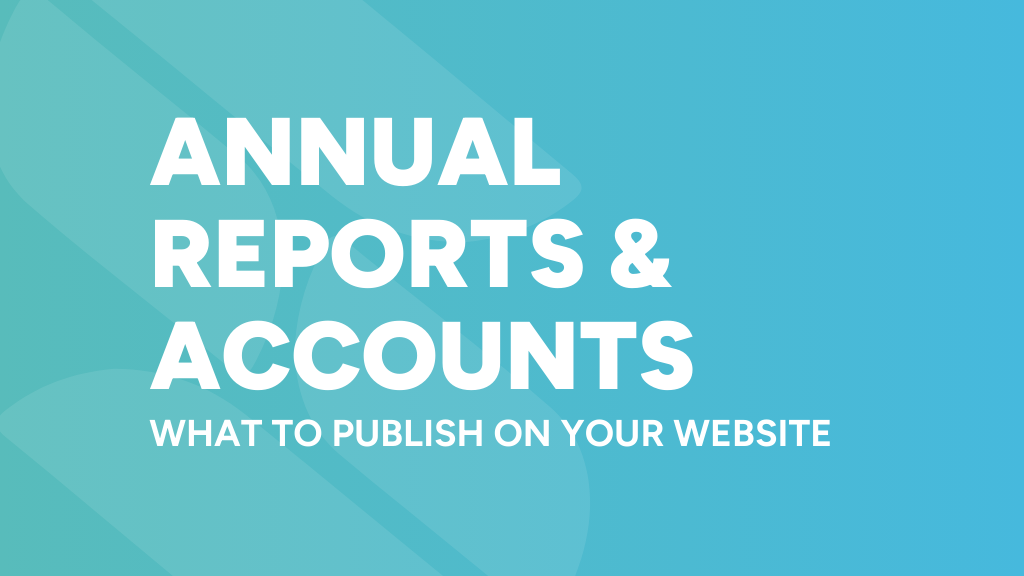Governance Information – What Schools Must Publish
Governance Information – What Schools Must Publish
Governance Information – What Schools Must Publish

Schools and academy trusts are required to publish up-to-date governance details on as part of the latest school website requirements. This ensures transparency, accountability, and compliance with Department for Education (DfE) guidance.
Many schools and trusts either miss key details or do not format them for easy access, which can lead to compliance issues. This guide outlines precisely what maintained schools, academy trusts, and FE colleges need to publish and best practices for meeting these requirements.
Why Publish Governance Information?
- Transparency – Demonstrates how decisions are made within your school or trust.
- Compliance – Fulfilling statutory obligations under the Academy Trust Handbook and Maintained Schools Governance Guidance.
- Accessibility – Helps parents, staff, and stakeholders understand governance structures.
Governance information should be published in a clear and structured way, making it easy for visitors to find key details.
What Do Schools and Trusts Need to Publish?
Maintained Schools Must Publish:
- Structure and remit of the governing body and any committees.
- Full names of governors, along with:
- Date of appointment.
- Term of office.
- Date stepped down (if applicable).
- Who appointed them.
- Attendance record at meetings over the last academic year.
- Governors’ Business & Financial Interests:
- Any governance roles in other educational institutions.
- Any material interests (e.g., relationships between governors, or between governors and staff, such as spouses or close relatives).
- Associate Members: Whether they have voting rights on any committee.
- Board Diversity Data: Schools are encouraged to publish anonymised data about the diversity of:
- Their board.
- Any associated committees.
- Individuals can opt out of sharing their diversity information.
Academy Trusts Must Publish:
- Memorandum of Association.
- Articles of Association.
- Names of trust members and academy trustees.
- Relevant business and financial interests of:
- Members.
- Trustees.
- Local governors.
- Accounting officers.
- Funding Agreement and Supplemental Funding Agreements.
- Up-to-date details of governance arrangements.
Academy Trusts Should Publish:
- Board Diversity Data: Encouraged but not mandatory.
- Board and Committee Memberships: Individuals must not be identifiable from published diversity data.
FE Colleges Must Publish:
- Annual Accountability Statement (Part 2) – within three months of the academic year (by 1 December).
- Regular Reviews – How well the education/training provided meets local needs, especially related to employment.
- Annual Governance Development Statement – Information on how governance and governors are developed.
- External Governance Review Outcomes – Summary of findings and action plans (at least every three years).
FE Colleges Should Publish:
- Governing Body Structure and Responsibilities.
- Details of Committees.
- Names of the Chair and Governors.
- Governor Recruitment Process – Selection criteria and procedures.
- Governors’ Handbook – Containing all governance-related information.
- Instrument and Articles of Government.
- Energy and Carbon Reporting Disclosure (recommended under Companies Regulations 2018).
How to Present Governance Information on Your Website
To meet compliance and improve user experience, governance details should be well-organised and easy to find.
1. Create a Dedicated Governance Page
- Title the page “Governance” or “Trust Governance & Accountability”.
- Group all governance documents in one easily accessible location.
2. Use Tables for Clarity
A table format makes it easier to present key governance information.
Example:
| Name of Governor | Appointed By | Term of Office | Attendance (2023) | Business & Pecuniary Interests |
|---|---|---|---|---|
| Jane Smith | Board of Trustees | 2021–2025 | 100% | Director at ABC Ltd. |
| John Doe | Parent Election | 2022–2026 | 90% | None declared |
This format makes it clear, structured, and accessible.
3. Include Links to Key Documents
Governance documents should be easily downloadable in PDF format, ensuring:
- They open in a new tab rather than replacing the current page.
- They are not password-protected (as per the Academy Trust Handbook).
4. Publish Board Diversity Data Anonymously
- Schools are encouraged to publish board diversity data.
- Ensure individuals cannot be identified.
- Format this as an aggregated summary rather than individual disclosures.
Example of Best Practice for Governance Transparency
Governance Information – 2024
Our governance arrangements are published in line with statutory requirements to ensure transparency and accountability.
Governing Body Structure
The following table shows the members of our Governing Body and their attendance in the last academic year:
| Name | Role | Appointed By | Term | Attendance |
|---|---|---|---|---|
| Jane Smith | Chair | Board of Trustees | 2021–2025 | 100% |
| John Doe | Parent Governor | Parent Election | 2022–2026 | 90% |
📄 Download our full Governance Arrangements Report
📄 Read our Articles of Association
📄 View our Funding Agreement
📄 See our Schools Financial Benchmarking Page
Next Steps for Schools and Trusts
✅ Check your governance records to ensure all required details are published.
✅ Ensure the information is structured clearly with tables and links.
✅ Update governance data annually to keep it current and compliant.
✅ Use accessible formats so documents are readable on all devices.
For further guidance, refer to our School Website Requirements Guide or join our School Marketing & Compliance Membership for expert advice and ongoing support.
Further reading
- For maintained schools – Constitution of governing bodies of maintained schools
- For Academies – Academies Financial Handbook (paragraphs 2.49 to 2.50)
- How to keep your school website content fresh throughout the year








